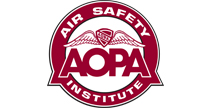Frozen logic: Wing contamination downs Skylane
(LAX02FA041)
 An airfoil relies on the smooth flow of air over its surfaces to generate lift. When that flow becomes distorted by ground accumulation of frost, snow, or ice, flight becomes questionable. Even minor wing contamination can result in increased stall speeds, longer takeoff rolls, and degraded climb performance. Try taking off with half an inch of hard glaze still clinging to your wings, and disaster is all but inevitable.
An airfoil relies on the smooth flow of air over its surfaces to generate lift. When that flow becomes distorted by ground accumulation of frost, snow, or ice, flight becomes questionable. Even minor wing contamination can result in increased stall speeds, longer takeoff rolls, and degraded climb performance. Try taking off with half an inch of hard glaze still clinging to your wings, and disaster is all but inevitable.
On Dec. 5, 2001, a Cessna 182E Skylane crashed shortly after takeoff from Ernest A. Love Field Airport in Prescott, Ariz. The pilot and two passengers had attempted to remove a layer of ice one-quarter to one-half inch thick from the airframe prior to launch, but they allowed the accumulation to remain on the tops of the wings. The aircraft caught fire after stalling and spinning into terrain during climbout. Two backseat passengers were seriously injured. The pilot and front-seat passenger were killed.
Related Links
Weather Wise: Precipitation & Icing interactive course
ASI Safety Quiz on Wing Contamination
Wing Contamination Safety Brief
The VFR cross-country flight was destined for Puerto Peñasco, Mexico. The backseat passengers met the pilot and the front-seat passenger at the pilot’s office at 7 a.m. on the day of the accident. The group then drove to the airport for breakfast before departing on the flight. According to one of the surviving passengers, they first went over to the ice-covered airplane and turned it so the rising sun could “catch it” and melt the ice.
Returning to the aircraft after breakfast, the passenger noted that there was “still ice on the wings; sun was glistening off the ice.” The pilot and two of the passengers then started to chip ice off the airplane. The passenger stated that the tops of the wings were difficult to reach and the ice was heaviest in that area. No ladders were used to access the wings and remove the ice. At one point the passenger asked the pilot if they were okay to fly, and the pilot responded with “yeah.”
The aircraft taxied to Runway 21L and took off about 10:10 a.m. The temperature was still below freezing. According to the passenger, the airplane banked right, then left, then back to the right. He recalled the pilot saying “this isn’t right,” or “something’s wrong.” The passenger stated that the engine appeared to be running normally.
According to witnesses on the ground, the aircraft traveled about 4,000 feet down the runway before becoming airborne, then struggled to gain altitude during climbout. At approximately 300 feet agl, the Skylane entered a 45-degree right bank and appeared to be attempting to return to the airport. As the bank angle increased to 80 degrees, the airplane entered a spin and became inverted. It collided with terrain and began to burn.
The NTSB concluded that the pilot failed to adequately deice the airplane prior to takeoff, which resulted in degraded aerodynamic and climb performance capability, failure to maintain adequate airspeed, and a stall/spin. In addition, investigators determined that the aircraft was likely overloaded and outside the center-of-gravity envelope. An autopsy also detected a prescription antidepressant and an over-the-counter sedating antihistamine in the pilot’s blood. The board cited the pilot’s incorrect weight-and-balance computations and his use of an impairing over-the-counter medication as contributing factors in the crash.
In the accident report, the NTSB described the effects of wing contamination by quoting a passage from the AOPA Air Safety Institute’s Aircraft Icing Safety Advisor: “Wind tunnel and flight tests have shown that frost, snow, and ice accumulations (on the leading edge or upper surface of the wing) no thicker or rougher than a piece of coarse sandpaper can reduce lift by 30 percent and increase drag up to 40 percent. Larger accretions can reduce lift even more and can increase drag by 80 percent or more.”
The accident pilot should not have attempted to fly with ice still adhering to the Skylane’s wings. Although deicing services were not offered at the departure airport, numerous effective deicing products are readily available at stores (polypropylene antifreeze, automotive windshield deicer, and even rubbing alcohol). Pilots who operate in cold weather without the benefit of a hangar should have such products handy and use them liberally before flight.
In an interesting footnote to an accident rife with flawed judgment, one of the surviving passengers said the pilot assured them that “once they got up in the air, the ice would melt at higher altitudes.” That would require a significant temperature inversion or a lengthy sublimation process—not to mention the ability to generate lift in the first place. Proximity to the sun might have quickly melted the wings of Icarus, but similar results shouldn’t be expected for an ice-shrouded Cessna. As we know from the outcome of that mythological flight—and so many others through the ages—flawed logic and poor decision making have no place in aviation.